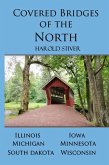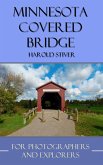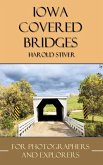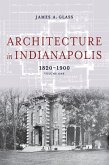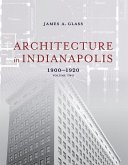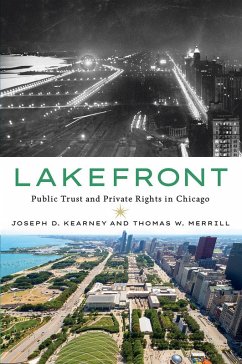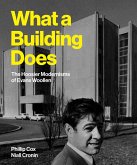Carla BruniA City Illustrated by Its Everyday Architecture
Chicago Homes (eBook, ePUB)
A City Illustrated by Its Everyday Architecture
Illustrator: Thompson, Phil
19,95 €
inkl. MwSt.
Sofort per Download lieferbar

10 °P sammeln
Carla BruniA City Illustrated by Its Everyday Architecture
Chicago Homes (eBook, ePUB)
A City Illustrated by Its Everyday Architecture
Illustrator: Thompson, Phil
- Format: ePub
- Merkliste
- Auf die Merkliste
- Bewerten Bewerten
- Teilen
- Produkt teilen
- Produkterinnerung
- Produkterinnerung

Bitte loggen Sie sich zunächst in Ihr Kundenkonto ein oder registrieren Sie sich bei
bücher.de, um das eBook-Abo tolino select nutzen zu können.
Hier können Sie sich einloggen
Hier können Sie sich einloggen
Sie sind bereits eingeloggt. Klicken Sie auf 2. tolino select Abo, um fortzufahren.

Bitte loggen Sie sich zunächst in Ihr Kundenkonto ein oder registrieren Sie sich bei bücher.de, um das eBook-Abo tolino select nutzen zu können.
EXPERT CONTRIBUTIONS from a graduate-level instructor at the Art Institute of Chicago and a renowned artist whose illustration work appears across regional and national media. | DEEP DIVE into the history of architecture in Chicago, featuring discussions of famous architects to those who designed the buildings that make up the fabric of Chicago's housing. | BEAUTIFULLY ILLUSTRATED with 100 hand-drawn line drawings of Chicago buildings | PERFECT GIFT for visitors to Chicago or for those who collect Chicago-themed art.
- Geräte: eReader
- ohne Kopierschutz
- eBook Hilfe
- Größe: 37.63MB
Andere Kunden interessierten sich auch für
![Covered Bridges of the North (eBook, ePUB) Covered Bridges of the North (eBook, ePUB)]() Harold StiverCovered Bridges of the North (eBook, ePUB)6,99 €
Harold StiverCovered Bridges of the North (eBook, ePUB)6,99 €![Minnesota (eBook, ePUB) Minnesota (eBook, ePUB)]() Harold StiverMinnesota (eBook, ePUB)2,99 €
Harold StiverMinnesota (eBook, ePUB)2,99 €![Iowa Covered Bridges (eBook, ePUB) Iowa Covered Bridges (eBook, ePUB)]() Harold StiverIowa Covered Bridges (eBook, ePUB)5,99 €
Harold StiverIowa Covered Bridges (eBook, ePUB)5,99 €![Architecture in Indianapolis (eBook, ePUB) Architecture in Indianapolis (eBook, ePUB)]() James A. GlassArchitecture in Indianapolis (eBook, ePUB)32,95 €
James A. GlassArchitecture in Indianapolis (eBook, ePUB)32,95 €![Architecture in Indianapolis (eBook, ePUB) Architecture in Indianapolis (eBook, ePUB)]() James A. GlassArchitecture in Indianapolis (eBook, ePUB)32,95 €
James A. GlassArchitecture in Indianapolis (eBook, ePUB)32,95 €![Lakefront (eBook, ePUB) Lakefront (eBook, ePUB)]() Joseph D. KearneyLakefront (eBook, ePUB)12,95 €
Joseph D. KearneyLakefront (eBook, ePUB)12,95 €![What a Building Does (eBook, ePUB) What a Building Does (eBook, ePUB)]() Phillip CoxWhat a Building Does (eBook, ePUB)20,95 €
Phillip CoxWhat a Building Does (eBook, ePUB)20,95 €-
-
-
- EXPERT CONTRIBUTIONS from a graduate-level instructor at the Art Institute of Chicago and a renowned artist whose illustration work appears across regional and national media.
- DEEP DIVE into the history of architecture in Chicago, featuring discussions of famous architects to those who designed the buildings that make up the fabric of Chicago's housing.
- BEAUTIFULLY ILLUSTRATED with 100 hand-drawn line drawings of Chicago buildings
- PERFECT GIFT for visitors to Chicago or for those who collect Chicago-themed art.
Dieser Download kann aus rechtlichen Gründen nur mit Rechnungsadresse in A, D ausgeliefert werden.
Produktdetails
- Produktdetails
- Verlag: Agate Publishing
- Erscheinungstermin: 7. Oktober 2025
- Englisch
- ISBN-13: 9781572849013
- Artikelnr.: 73651984
- Verlag: Agate Publishing
- Erscheinungstermin: 7. Oktober 2025
- Englisch
- ISBN-13: 9781572849013
- Artikelnr.: 73651984
- Herstellerkennzeichnung Die Herstellerinformationen sind derzeit nicht verfügbar.
Carla Bruni has spent close to twenty years preserving, studying, and writing about historic architecture across dozens of US cities and four continents. She teaches graduate students at the School of the Art Institute of Chicago, where she holds a master of science degree in historic preservation. She has been a recurring guest discussing architecture and environmental issues on WGN Radio, and her work has been featured by StoryCorps Chicago, WLS, NPR, PRX, the Chicago Reader, Chicago Tonight, Chicago Magazine, and various national and international publications. She also works to support the 30,000+ members of the Chicago Bungalow Association, overseeing energy efficiency retrofits, creating history and home maintenance resources, and leading the charge to list thousands of vintage homes in the National Register of Historic Places. Her professional involvement in community repair and revitalization has taken her to every corner of Chicago, her native city.
Phil Thompson is the cofounder and illustrator behind Wonder City Studio (wondercitystudio.com), a company dedicated to creating artwork of the places worth preserving, with a special love for Chicago. For ten years, he has captured more than a thousand homes and buildings with his pen-and-ink illustrations. His work has been featured in dozens of media outlets, including the Chicago Tribune, Chicagoist, Curbed, Business Insider, and Chicago magazine. Clients have included the University of Chicago, Northwestern University, and the Chicago Architecture Center, among others, and his prints are sold at seventeen retail locations throughout the city.
Phil Thompson is the cofounder and illustrator behind Wonder City Studio (wondercitystudio.com), a company dedicated to creating artwork of the places worth preserving, with a special love for Chicago. For ten years, he has captured more than a thousand homes and buildings with his pen-and-ink illustrations. His work has been featured in dozens of media outlets, including the Chicago Tribune, Chicagoist, Curbed, Business Insider, and Chicago magazine. Clients have included the University of Chicago, Northwestern University, and the Chicago Architecture Center, among others, and his prints are sold at seventeen retail locations throughout the city.
Foreword
Introduction
Chapter 1: Early Inhabitants, Early Homes 1780 to 1837
* Introduction
* Little Home on the River
* Homes of the French Colonial/Creoles
* The DuSable Home
* Homes of the Native Americans in the Region
* Early American Settlers: The Log Cabin
* The Making of the Chicago Grid
* New Town, New Gables Abound
* From Timber to Balloon Frame
* The Greek Revival Home
* The Clarke-Ford Home
* A City by 1837
Chapter 2: From Founding to Fire 1837 to 1871
* Introduction
* Homes for a Booming Metropolis
* Building Materials
* The Pre-Fire Homes Still with Us
* Interior Spaces in the mid-1800s
* Heating and Cooling, Lighting, Plumbing
* The Pre-Eminent Workers Cottage
* House Moving House Raising
* The Ornate Cottages and Rowhouses of Chicago (pre-1871)
* Italianate
* Second Empire
* Pre-Fire Homes in the Former “Suburbs”
Chapter 3: Rising and Rebuilding 1871 to 1882
* Introduction
* Fire Limits and Regulation
* Decline of Pine, Uptick of Brick
* Joliet Limestone, “Athens Marble”
* Post-Fire Patterns of Population Growth
* The Post-Fire Limits, Pre-Annexation Homes of the “Suburbs”
* Architecture as a Profession
* The Dominant Style of the Era
* The Brick Workers Cottage
* The Rise of “Flats” Buildings
* Two-Story and Wood-frame Italianates
Chapter 4: Annexation and Elevation 1882 to 1893
* Introduction
* Bold New Architecture in Chicago
* Raging Styles
* New Heights
* The Apartment Hotels and the First Courtyard Building
* Terra Cotta Finds Its Moment
* The Real Estate Developers
* Company Towns, Company Housing
* Annexation and the Changing Fire Limits
* City Lights, City Heats
* Italianate, continued
* Chateauesque
* Stick Style Shingle Style
Chapter 5: White City, Blight City 1893 to 1900
* Introduction
* The World’s Columbian Exposition
* Sidebar: Clarifying Windows
* Beaux Arts/Classical Revival
* Romanesque Revival (and Interment)
* Chateauesque
* Farewell to the Queen (Anne)
* Colonial Revival
* Greystones + Brick Flats
* Workers Cottages Just Keep on Working
* Sidebar: Working Class Domestic Life
* Courtyard Apartment Buildings
* Prairie Style
* American Foursquares
* Tudor Revival
* Sidebar: Coach Houses
Chapter 6: New Century, New Chicago 1900 to 1917
* Introduction
* Adapting The Workers Cottage
* Burnham’s 1909 Plan of Chicago
* Frame and Stucco Bungalows
* Chicago Bungalows
* Sears Home Catalogs
* Tudor Revivals
* Colonial Revivals
* Greystones
* Prairie Style Homes
* American Foursquares
* Bleak Housing Conditions and Tenement Reform
* Courtyard Apartment Buildings
* Brick Two-Flats and Variations on a Theme
* The Back Porch
Chapter 7: Death, Speed, and a Bit of Whimsy 1917 to 1929
* Introduction
* Chicago Bungalows
* Brick Two-Flats and Variations on a Theme
* Courtyard Apartment Buildings
* The “Own Your Own Home” Movement
* Tudor Revivals
* Colonial Revivals
* Spanish Revivals
* Foursquares
* Homes for Cars
* Art Deco
Chapter 8: Hard Times, New Deals, and a Century of Progress 1929 to 1941
* Introduction
* The National Mortgage Crisis
* Redlining
* Lingering Chicago Bungalows
* Tudor Revivals
* World’s Fair 1933
* West Burton Place and the Creative Response to the Depression
* Art Deco and Moderne
Chapter 9: Common Modifications to Homes: How We Really Live
* Introduction
* Dormer and Second Story Additions
* Enclosed Porches
* Metal Awnings
* Perma-Stone / Formstone
* Removing + Hiding Fireplaces and Stained Glass
* Vinyl Siding
* Glass Block + PIcture Windows
* Raised Workers Cottages
* Metal Hand and Porch Rails
* Street- or Courtyard- Facing Metal Balconies
* Overlord Additions
Epilogue
Introduction
Chapter 1: Early Inhabitants, Early Homes 1780 to 1837
* Introduction
* Little Home on the River
* Homes of the French Colonial/Creoles
* The DuSable Home
* Homes of the Native Americans in the Region
* Early American Settlers: The Log Cabin
* The Making of the Chicago Grid
* New Town, New Gables Abound
* From Timber to Balloon Frame
* The Greek Revival Home
* The Clarke-Ford Home
* A City by 1837
Chapter 2: From Founding to Fire 1837 to 1871
* Introduction
* Homes for a Booming Metropolis
* Building Materials
* The Pre-Fire Homes Still with Us
* Interior Spaces in the mid-1800s
* Heating and Cooling, Lighting, Plumbing
* The Pre-Eminent Workers Cottage
* House Moving House Raising
* The Ornate Cottages and Rowhouses of Chicago (pre-1871)
* Italianate
* Second Empire
* Pre-Fire Homes in the Former “Suburbs”
Chapter 3: Rising and Rebuilding 1871 to 1882
* Introduction
* Fire Limits and Regulation
* Decline of Pine, Uptick of Brick
* Joliet Limestone, “Athens Marble”
* Post-Fire Patterns of Population Growth
* The Post-Fire Limits, Pre-Annexation Homes of the “Suburbs”
* Architecture as a Profession
* The Dominant Style of the Era
* The Brick Workers Cottage
* The Rise of “Flats” Buildings
* Two-Story and Wood-frame Italianates
Chapter 4: Annexation and Elevation 1882 to 1893
* Introduction
* Bold New Architecture in Chicago
* Raging Styles
* New Heights
* The Apartment Hotels and the First Courtyard Building
* Terra Cotta Finds Its Moment
* The Real Estate Developers
* Company Towns, Company Housing
* Annexation and the Changing Fire Limits
* City Lights, City Heats
* Italianate, continued
* Chateauesque
* Stick Style Shingle Style
Chapter 5: White City, Blight City 1893 to 1900
* Introduction
* The World’s Columbian Exposition
* Sidebar: Clarifying Windows
* Beaux Arts/Classical Revival
* Romanesque Revival (and Interment)
* Chateauesque
* Farewell to the Queen (Anne)
* Colonial Revival
* Greystones + Brick Flats
* Workers Cottages Just Keep on Working
* Sidebar: Working Class Domestic Life
* Courtyard Apartment Buildings
* Prairie Style
* American Foursquares
* Tudor Revival
* Sidebar: Coach Houses
Chapter 6: New Century, New Chicago 1900 to 1917
* Introduction
* Adapting The Workers Cottage
* Burnham’s 1909 Plan of Chicago
* Frame and Stucco Bungalows
* Chicago Bungalows
* Sears Home Catalogs
* Tudor Revivals
* Colonial Revivals
* Greystones
* Prairie Style Homes
* American Foursquares
* Bleak Housing Conditions and Tenement Reform
* Courtyard Apartment Buildings
* Brick Two-Flats and Variations on a Theme
* The Back Porch
Chapter 7: Death, Speed, and a Bit of Whimsy 1917 to 1929
* Introduction
* Chicago Bungalows
* Brick Two-Flats and Variations on a Theme
* Courtyard Apartment Buildings
* The “Own Your Own Home” Movement
* Tudor Revivals
* Colonial Revivals
* Spanish Revivals
* Foursquares
* Homes for Cars
* Art Deco
Chapter 8: Hard Times, New Deals, and a Century of Progress 1929 to 1941
* Introduction
* The National Mortgage Crisis
* Redlining
* Lingering Chicago Bungalows
* Tudor Revivals
* World’s Fair 1933
* West Burton Place and the Creative Response to the Depression
* Art Deco and Moderne
Chapter 9: Common Modifications to Homes: How We Really Live
* Introduction
* Dormer and Second Story Additions
* Enclosed Porches
* Metal Awnings
* Perma-Stone / Formstone
* Removing + Hiding Fireplaces and Stained Glass
* Vinyl Siding
* Glass Block + PIcture Windows
* Raised Workers Cottages
* Metal Hand and Porch Rails
* Street- or Courtyard- Facing Metal Balconies
* Overlord Additions
Epilogue
Foreword
Introduction
Chapter 1: Early Inhabitants, Early Homes 1780 to 1837
* Introduction
* Little Home on the River
* Homes of the French Colonial/Creoles
* The DuSable Home
* Homes of the Native Americans in the Region
* Early American Settlers: The Log Cabin
* The Making of the Chicago Grid
* New Town, New Gables Abound
* From Timber to Balloon Frame
* The Greek Revival Home
* The Clarke-Ford Home
* A City by 1837
Chapter 2: From Founding to Fire 1837 to 1871
* Introduction
* Homes for a Booming Metropolis
* Building Materials
* The Pre-Fire Homes Still with Us
* Interior Spaces in the mid-1800s
* Heating and Cooling, Lighting, Plumbing
* The Pre-Eminent Workers Cottage
* House Moving House Raising
* The Ornate Cottages and Rowhouses of Chicago (pre-1871)
* Italianate
* Second Empire
* Pre-Fire Homes in the Former “Suburbs”
Chapter 3: Rising and Rebuilding 1871 to 1882
* Introduction
* Fire Limits and Regulation
* Decline of Pine, Uptick of Brick
* Joliet Limestone, “Athens Marble”
* Post-Fire Patterns of Population Growth
* The Post-Fire Limits, Pre-Annexation Homes of the “Suburbs”
* Architecture as a Profession
* The Dominant Style of the Era
* The Brick Workers Cottage
* The Rise of “Flats” Buildings
* Two-Story and Wood-frame Italianates
Chapter 4: Annexation and Elevation 1882 to 1893
* Introduction
* Bold New Architecture in Chicago
* Raging Styles
* New Heights
* The Apartment Hotels and the First Courtyard Building
* Terra Cotta Finds Its Moment
* The Real Estate Developers
* Company Towns, Company Housing
* Annexation and the Changing Fire Limits
* City Lights, City Heats
* Italianate, continued
* Chateauesque
* Stick Style Shingle Style
Chapter 5: White City, Blight City 1893 to 1900
* Introduction
* The World’s Columbian Exposition
* Sidebar: Clarifying Windows
* Beaux Arts/Classical Revival
* Romanesque Revival (and Interment)
* Chateauesque
* Farewell to the Queen (Anne)
* Colonial Revival
* Greystones + Brick Flats
* Workers Cottages Just Keep on Working
* Sidebar: Working Class Domestic Life
* Courtyard Apartment Buildings
* Prairie Style
* American Foursquares
* Tudor Revival
* Sidebar: Coach Houses
Chapter 6: New Century, New Chicago 1900 to 1917
* Introduction
* Adapting The Workers Cottage
* Burnham’s 1909 Plan of Chicago
* Frame and Stucco Bungalows
* Chicago Bungalows
* Sears Home Catalogs
* Tudor Revivals
* Colonial Revivals
* Greystones
* Prairie Style Homes
* American Foursquares
* Bleak Housing Conditions and Tenement Reform
* Courtyard Apartment Buildings
* Brick Two-Flats and Variations on a Theme
* The Back Porch
Chapter 7: Death, Speed, and a Bit of Whimsy 1917 to 1929
* Introduction
* Chicago Bungalows
* Brick Two-Flats and Variations on a Theme
* Courtyard Apartment Buildings
* The “Own Your Own Home” Movement
* Tudor Revivals
* Colonial Revivals
* Spanish Revivals
* Foursquares
* Homes for Cars
* Art Deco
Chapter 8: Hard Times, New Deals, and a Century of Progress 1929 to 1941
* Introduction
* The National Mortgage Crisis
* Redlining
* Lingering Chicago Bungalows
* Tudor Revivals
* World’s Fair 1933
* West Burton Place and the Creative Response to the Depression
* Art Deco and Moderne
Chapter 9: Common Modifications to Homes: How We Really Live
* Introduction
* Dormer and Second Story Additions
* Enclosed Porches
* Metal Awnings
* Perma-Stone / Formstone
* Removing + Hiding Fireplaces and Stained Glass
* Vinyl Siding
* Glass Block + PIcture Windows
* Raised Workers Cottages
* Metal Hand and Porch Rails
* Street- or Courtyard- Facing Metal Balconies
* Overlord Additions
Epilogue
Introduction
Chapter 1: Early Inhabitants, Early Homes 1780 to 1837
* Introduction
* Little Home on the River
* Homes of the French Colonial/Creoles
* The DuSable Home
* Homes of the Native Americans in the Region
* Early American Settlers: The Log Cabin
* The Making of the Chicago Grid
* New Town, New Gables Abound
* From Timber to Balloon Frame
* The Greek Revival Home
* The Clarke-Ford Home
* A City by 1837
Chapter 2: From Founding to Fire 1837 to 1871
* Introduction
* Homes for a Booming Metropolis
* Building Materials
* The Pre-Fire Homes Still with Us
* Interior Spaces in the mid-1800s
* Heating and Cooling, Lighting, Plumbing
* The Pre-Eminent Workers Cottage
* House Moving House Raising
* The Ornate Cottages and Rowhouses of Chicago (pre-1871)
* Italianate
* Second Empire
* Pre-Fire Homes in the Former “Suburbs”
Chapter 3: Rising and Rebuilding 1871 to 1882
* Introduction
* Fire Limits and Regulation
* Decline of Pine, Uptick of Brick
* Joliet Limestone, “Athens Marble”
* Post-Fire Patterns of Population Growth
* The Post-Fire Limits, Pre-Annexation Homes of the “Suburbs”
* Architecture as a Profession
* The Dominant Style of the Era
* The Brick Workers Cottage
* The Rise of “Flats” Buildings
* Two-Story and Wood-frame Italianates
Chapter 4: Annexation and Elevation 1882 to 1893
* Introduction
* Bold New Architecture in Chicago
* Raging Styles
* New Heights
* The Apartment Hotels and the First Courtyard Building
* Terra Cotta Finds Its Moment
* The Real Estate Developers
* Company Towns, Company Housing
* Annexation and the Changing Fire Limits
* City Lights, City Heats
* Italianate, continued
* Chateauesque
* Stick Style Shingle Style
Chapter 5: White City, Blight City 1893 to 1900
* Introduction
* The World’s Columbian Exposition
* Sidebar: Clarifying Windows
* Beaux Arts/Classical Revival
* Romanesque Revival (and Interment)
* Chateauesque
* Farewell to the Queen (Anne)
* Colonial Revival
* Greystones + Brick Flats
* Workers Cottages Just Keep on Working
* Sidebar: Working Class Domestic Life
* Courtyard Apartment Buildings
* Prairie Style
* American Foursquares
* Tudor Revival
* Sidebar: Coach Houses
Chapter 6: New Century, New Chicago 1900 to 1917
* Introduction
* Adapting The Workers Cottage
* Burnham’s 1909 Plan of Chicago
* Frame and Stucco Bungalows
* Chicago Bungalows
* Sears Home Catalogs
* Tudor Revivals
* Colonial Revivals
* Greystones
* Prairie Style Homes
* American Foursquares
* Bleak Housing Conditions and Tenement Reform
* Courtyard Apartment Buildings
* Brick Two-Flats and Variations on a Theme
* The Back Porch
Chapter 7: Death, Speed, and a Bit of Whimsy 1917 to 1929
* Introduction
* Chicago Bungalows
* Brick Two-Flats and Variations on a Theme
* Courtyard Apartment Buildings
* The “Own Your Own Home” Movement
* Tudor Revivals
* Colonial Revivals
* Spanish Revivals
* Foursquares
* Homes for Cars
* Art Deco
Chapter 8: Hard Times, New Deals, and a Century of Progress 1929 to 1941
* Introduction
* The National Mortgage Crisis
* Redlining
* Lingering Chicago Bungalows
* Tudor Revivals
* World’s Fair 1933
* West Burton Place and the Creative Response to the Depression
* Art Deco and Moderne
Chapter 9: Common Modifications to Homes: How We Really Live
* Introduction
* Dormer and Second Story Additions
* Enclosed Porches
* Metal Awnings
* Perma-Stone / Formstone
* Removing + Hiding Fireplaces and Stained Glass
* Vinyl Siding
* Glass Block + PIcture Windows
* Raised Workers Cottages
* Metal Hand and Porch Rails
* Street- or Courtyard- Facing Metal Balconies
* Overlord Additions
Epilogue

